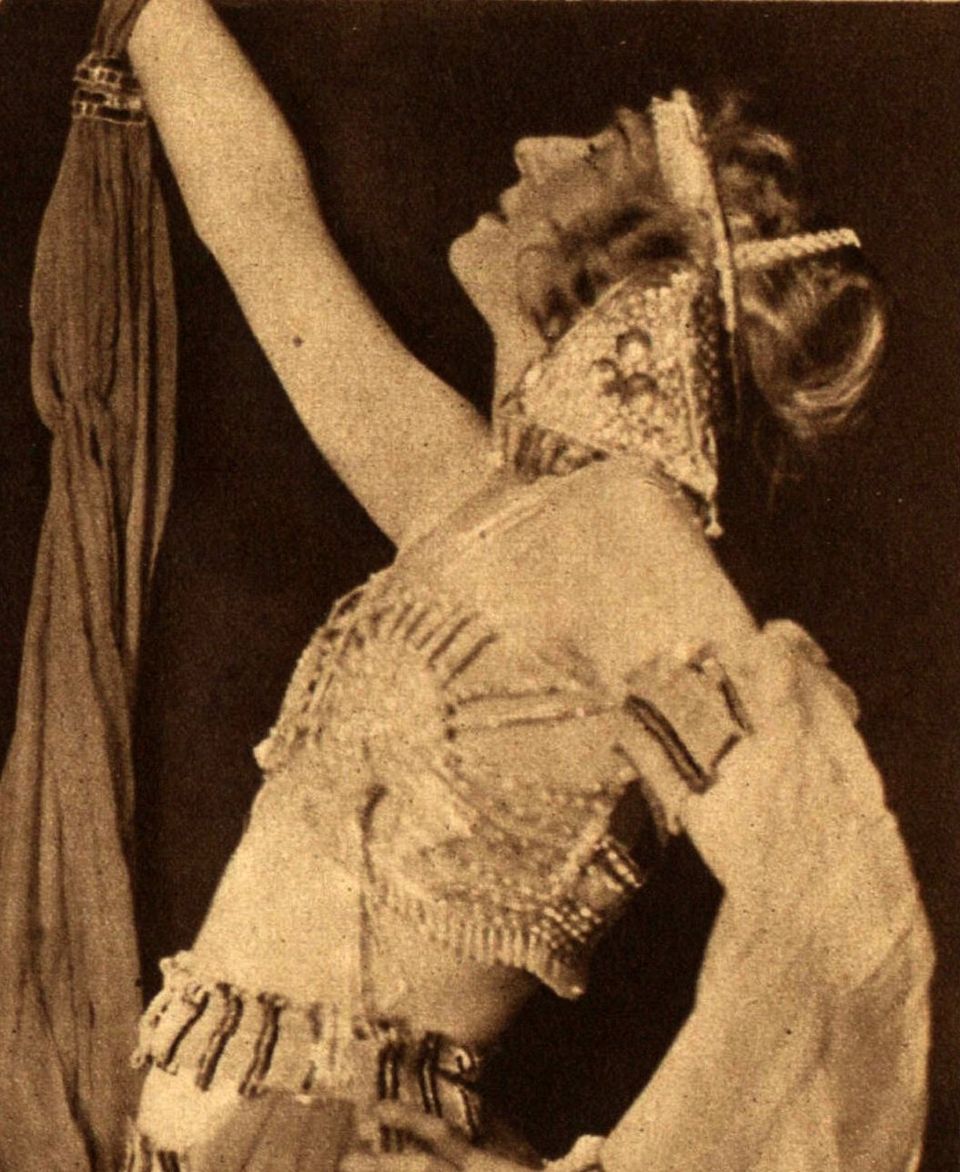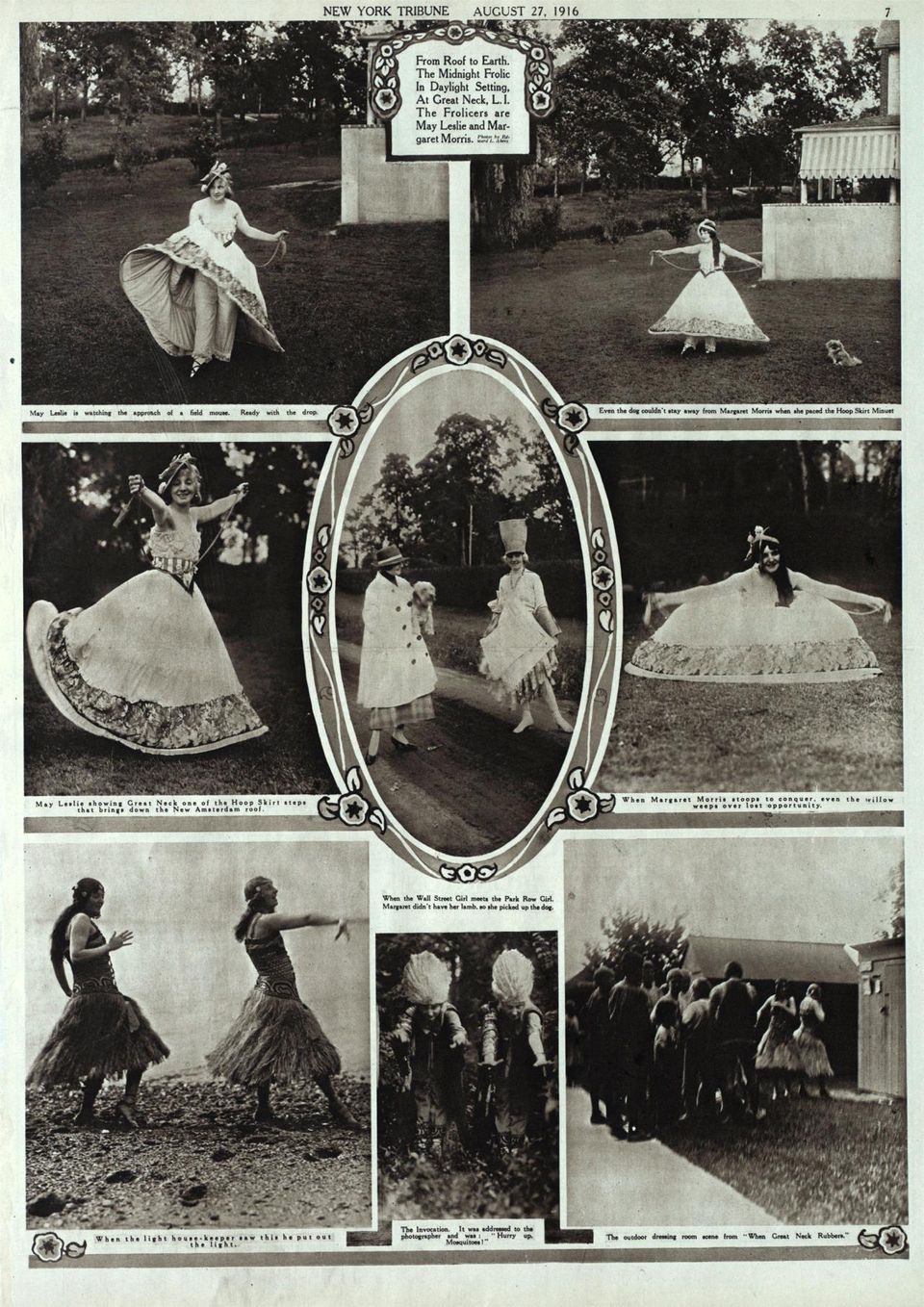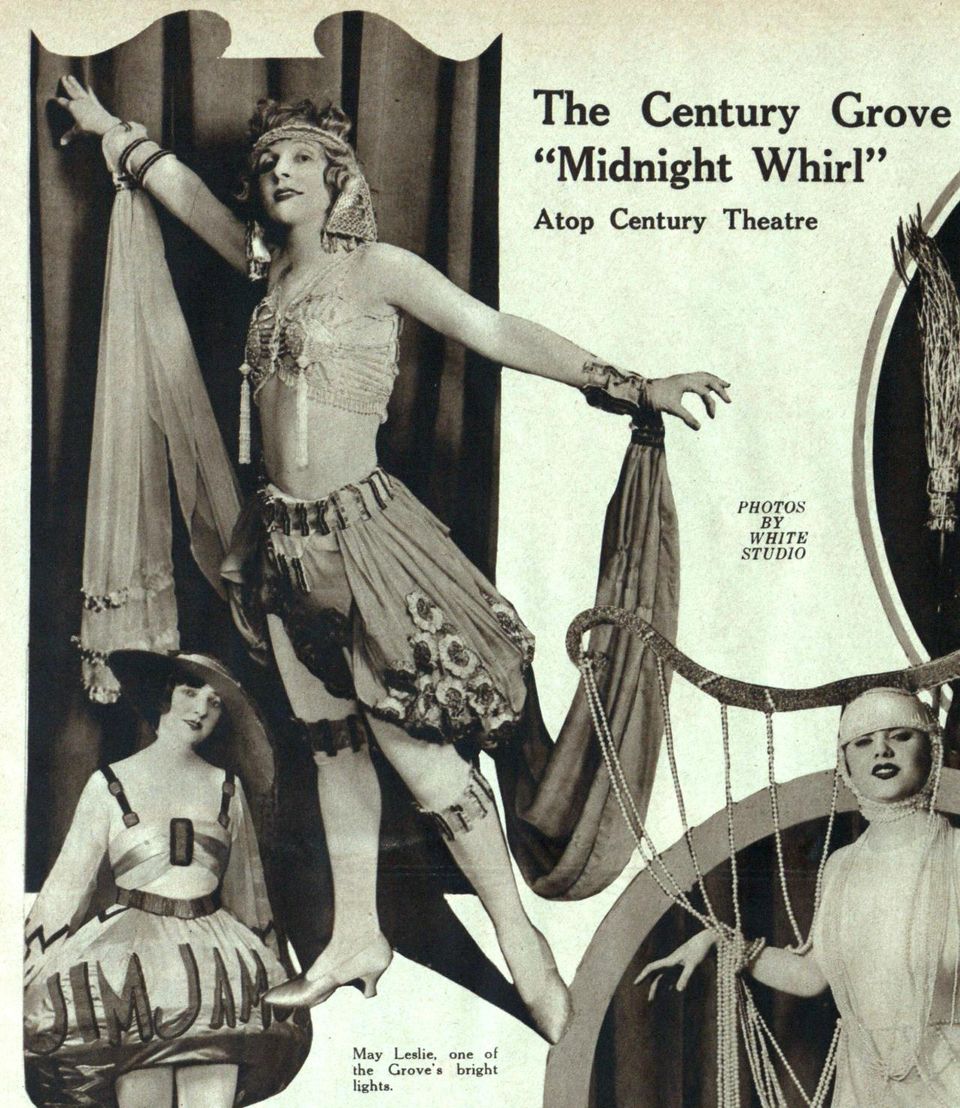MAY LESLIE And Her Bad Boys
The Ziegfeld Follie Connected to the Biggest NY Gang
May Leslie first appears on Broadway in the 1903 production of Twirly Whirly that ran for a whopping 247 performances with the famous Lillian Russell. What an awesome show biz start for May Leslie. She was a talented young performer with great dreams for the life ahead of her.
It’s hard to know a lot about May Leslie, but what little we do know from news accounts is sensational. She seemed to catch the eye of wealthy men. She was in the first Ziegfeld Follies in 1907, which even President Theodore Roosevelt attended. And she was cast in the first Midnight Frolic, along with the famous cowboy comedian Will Rodgers. Significantly, she became the very first stage manager on Broadway. She was a great fund raiser for the troops during World War l. Additionally, she went on to produce her own stage shows and continued to raise funds for worth well causes. She was a kind and gracious woman who had show business in her blood. However, she had a way of attracting interesting men with dark sides. All of this makes her story fascinating and most unique.
Above: An original documentary on the life of May Leslie, a Ziegfeld Follie, who may have been involved with the notorious 5 point gang of New York.
The first of the many Broadway shows she was in was the 1903 production “Twirly Whirly” at the famed Weber and Fields' Broadway Music Hall, with a huge cast including trend setter Lillian Russell, “one of the most famous actresses and singers of the late 19th and early 20th centuries, known for her beauty and style, her voice and stage presence” (Wikipedia).
May Leslie was busy. From 1903 through 1906 she was in 7 Broadway productions. And then in 1907 she was contracted by Ziegfeld. A real game changer for her.
But before we delve into her time with Ziegfeld, let's get caught up with her sorted personal life.
The earliest newspaper mention we have of her is from April 15, 1905, when she was seeking a divorce form Mortimer Thompson, a millionaire with whom she had had a daughter. They had been married 5 years earlier in 1900 but were only together for two of those years.
Now after 3 years and legal separation, she wanted a divorce.
She had caught the eye of Charles Rodgers son of millionaire William J. Rogers who was the president of the famed Borden's Evaporated Milk Company. And son Charles had fallen madly and passionately in love with May Leslie, a show girl.
While she was staying at the Young’s Hotel in Atlantic City awaiting the final divorce papers. Charles left his family and the Borden Company to be with the show girl. When the family learned of this they were horrified. A show girl could have no place in their family. And so, they cut off their son. He had no financial support and no money. His father was quoted in the press as saying, “He will not get a dollar from me. If he marries he will have to depend on himself entirely.”
The two love birds left Atlantic City, with divorce papers in hand, they returned to New York. What happened to their relationship after that is unclear but were are no records of marriage. They had parted company.
A few months later May Leslie was in the news again. This time she was involved in a shootout that left Willian J. Harrington dead and mobster Paul Kelly wounded. She appears to have been on a double date at the saloon and dance hall when the shootout happened. She was arrested with all seven other people who were at the scene at the time. Police believed they were all members of the Paul Kelly mobster association.
The NYPD could not give a clear picture of what happened and ultimately no one was convicted of any crime. But why was May Leslie there with these mobsters, and why was she staying at the Matawan Hotel where the Paul Kelly gangster association would rendezvous? We may never know. But to be fair, show girls dated many guys, and especially the famous and rich. So, perhaps she was unknowingly dating someone in the mob. Perhaps she was just curious, or madly in love.
Who is Paul Kelly you might wonder? Paul Kelly according to Wikipedia “was an American mobster and former boxer, who founded the Five Points Gang in New York City after starting some brothels with prize money earned in boxing. It was one of the last dominant street gangs in New York history. He was known for his high culture and gentle manners, Kelly recruited young men who later became prominent criminals of the 20th century, including Johnny Torrio, Al Capone, Lucky Luciano and Frankie Yale”
May Leslie was certainly rubbing shoulders with the wrong people.
Let us now
return to May Leslie’s time with Ziegfeld, the soon-to-be most powerful showman
ever to grace Broadway.
Although the first 1907 Ziegfeld Follies show, of which she was a part, was only intended to be a brief summer run, it turned out to be the best long running show Ziegfeld had ever done. It changed show business forever. The public demanded more. Everyone that was somebody paid the admission price and attended show. Florenz Ziegfeld Jr. became one of the wealthiest men in all of New York. And he lavished the women with more money than they could ever have imagined. There were no discounted minimum wage girlies in Flo Ziegfeld’s world. There were only glorified show business professionals.
For women who had come out of the poverty of New York’s lower east side and then to be one of the Follie was beyond anything they could have imagined. They suddenly had lavish life styles. They were dating millionaires. And when the Hollywood studios came looking for actresses they came knocking.
And May Leslie was a participant in this major historical culture event. She performed for the Ziegfeld Follies of 1907, 1908, 1912-1914, and 1917, a full decade. She was part of Ziegfeld's musicals “A Parisian Model” (1908), “The Century Girl” (1916-1917), and “Miss 1917” (1917-1918). It was a great ride.
As part of the Ziegfeld Follies May Leslie became one of the culture icons of the independent “New Women” that was beginning to immerge out the Victorian era. Even though she left the Follies in 1918 she was a nonetheless part of the cultural revolution that was taking place.
Madison Avenue ad agencies knowing it had to tap into this new cultural direction, came knocking too. They hired May Leslie to model such things silk lingerie for Vanity Fair.
The Follies to which she belonged was a phenomenon the likes of which the world had never seen, nor has yet to see again.
To promote the 1916 Midnight Frolic for Ziegfeld, May Leslie did a public event that drew the attention of the public and press alike. She and Margaret Morris satirized hoop skirts and bloomers then changed into grass skirts revealing their bare knees. And in 1916 this was an absolute sensation. Men were lined up outside the dressing booth to get a glimpse of those bare legs. It was a comical parody of the Victorian Woman verses the New Women. She was the flapper before the flapper era. The promotion made a full page in the New York Tribune.
In the summer of 1917 May Leslie made more news by raising money to buy smokes for the soldiers fighting the war overseas. America was fully involved in the World War. Patriotism was in full swing. Although it may sound a bit bizarre today, back then providing smokes to soldiers was a very patriotic thing to do. May Leslie and other Ziegfeld Follies set up a game between the all-male Ziegfeld Follies baseball team and the Friars Club. The idea was that fans would put money in the silk stockings of the Ziegfeld Beauties. What fan could resist? They raised $19,000.00 in today’s dollar value. And that was a lot of smokes for the soldiers overseas.
May Leslie continued raising funds for the soldiers after this event, but she did it apart from the Follies. And that was because something happened, and she was with the Follies no more. And that something was an event that mirrored her time before she joined the Ziegfeld Follies involving the New York gangs.
There are April 1918 newspaper accounts of a certain May Leslie being involved in yet another shooting with ties to the underworld. Harry Cohen, a gambler and master burglar was shot and killed in the hallway of the apartment house where he lived. Cohen was scheduled to tell the District Attorney all about the illegal mob run gambling business in New York. The mob feared their operations would be exposed if Cohen spilled the beans, so they simply had Cohen erased.
May Leslie was arrested with her boyfriend Sam Schepps by police because they had been at a crap game where Cohen was the night before his death. But, prosecutors had a favorable view of Sam Schepps because he had had previously aided the District Attorney to convict police officer Charles Becker of the famed Rosenthal murder. The only thing police found note-worthy were checks written by May Leslie to Sam Schepps for jewelry. But, buying jewelry is not a crime. After being questioned it was obvious to the investigators that they had nothing to connect the couple to the actual murder.
Just a side note here. May Leslie’s lover Sam Schepps may have helped bring down the "Crookedest" Cop in New York. But, Samuel Schepps was also a New York City mobster himself with the Monk Eastman Gang. Schepps ran gambling houses for the gang. On July 16, 1912, Herman Rosenthal was murdered in front of the Hotel Metropole in New York City. Schepps was identified by co-conspirators as the "paymaster" of the plot to kill Rosenthal. But in discussions with law enforcers Schepps was happy to testify against his accomplices for immunity. Schepps, with other mob informants, testified at the Becker-Rosenthal trial. Their testimony resulted in the conviction of Charles Becker and the four gunmen involved in the murder.
Charles Becker became the first American police officer to receive the death penalty for murder. The scandal that surrounded his arrest, conviction, and execution was one of the most important in New York City’s Progressive Era. And May Leslie’s gangster boyfriend helped to bring him down. One wonders just how much in all of this was May Leslie involved? It is also worth remembering that her boyfriend was connected to mobster Paul Kelly and the Five Points Gang. The same mobster group she was involved with before joining the Follies.
May Leslie and the men she dated seemed to generate news headlines. She certainly was into the bad boys.
Now, no longer with the Ziegfeld Follies, and with never a dull moment in her life, May Leslie suddenly reappears in the news again as the first woman stage manager in the history of Broadway.
Brought in as a show girl for a new production “Midnight Whirl” at the Century. May Leslie suddenly found herself appointed stage manager by producer Ray Comstock. The former stage manager had been drafted to serve in the armed forces. The war was in full swing and single women in various fields suddenly found themselves filling positions previously held by men. And since May Leslie had years of stage experience her engagement seemed natural and obvious.
She managed the “Midnight Whirl” with a great team of women. The show took place on the roof of the Century and as the name might suggest it was patterned after Ziegfeld’s Midnight Frolic. One of the women she worked with was Betty Allen who would go on to perform as a ballerina in the 1925 classic film “Phantom of the Opera.”
May Leslie also performed in the “Midnight Whirl” as Salome and the dance of the Seven Veils. A similar Salome act was in 1907 Follies show where May Leslie began her time with Ziegfeld. The show did well. May Leslie had gone full circle.
Following the show May Leslie leaves the world of big Broadway productions and seems to settle down, producing her own shows. These were much smaller shows and easier to produce. Perhaps the reason for this was her new marriage. An article in the South Bend News would later report that former Ziegfeld show girl “May Leslie, one of the most beautiful show girls in the world, now happily married and has two children.”
Our story began with a married May Leslie who had a daughter, and ends in the same way, except now she is married with two children.
Most show girls in that era would eventually marry, retire from show business and disappear from public view. But not May Leslie. She continued making news doing fundraisers, teaching dance, and even small Cabarets shows right up through 1930. For more than a decade following her time with Ziegfeld, she lived her artistic dream.
Perhaps the most significant thing she leaves us is a fabulous piece of art by the great art nouveau artist Raphaël Kirchner. It can be seen all over the internet. It is entitled “Pierrot Dream” for which she modeled. It was a part of his 7 deadly sins series. The masterpieces hung in the Century Theater for years. They were and continue to be a part of the Ziegfeld legacy.
The Dream painting personifies all that May Leslie was about. To dream and live big.





